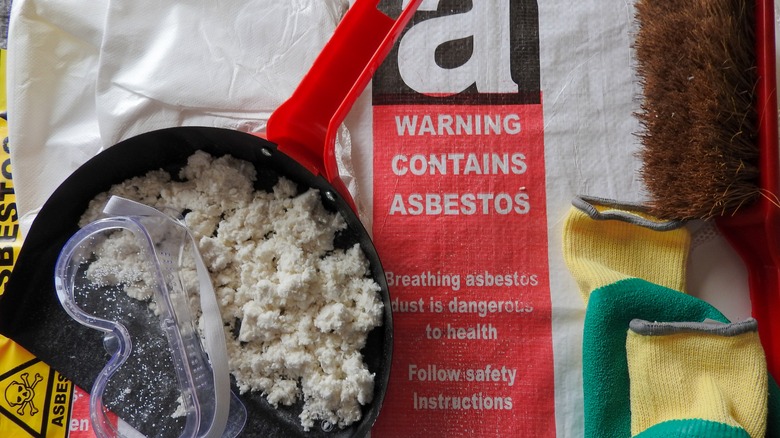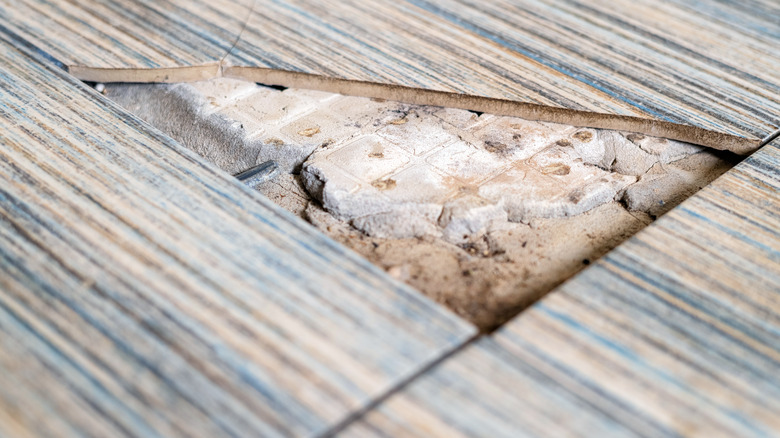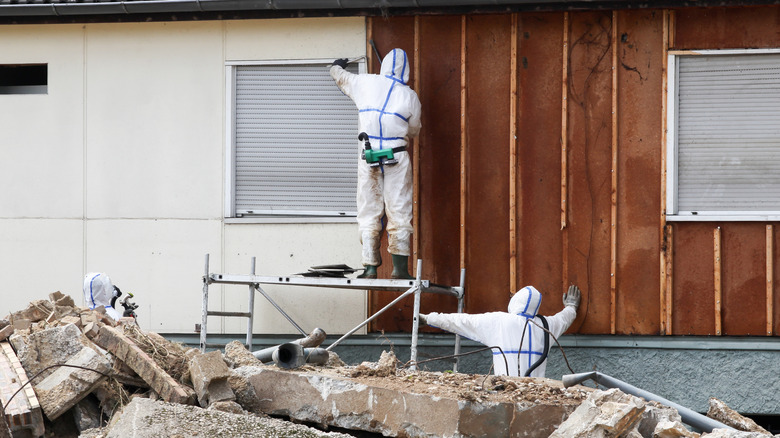The Most Dangerous Type Of Asbestos Could Be Lurking In This Part Of Your Home
Asbestos is a dangerous material many homeowners don't know is lurking behind their walls and in their floorboards. Though there are several forms, one of the most dangerous is called crocidolite or blue asbestos. Though no longer used in the United States, it could still be found in some of the materials in your home, including in ceiling tiles, the cement sheets commonly used in water-prone areas like the bathroom, and in some forms of insulation in your attic or walls.
Asbestos is a very fine material, so thin and tiny that it easily enters into a person's respiratory system whenever the material is disturbed. You are not likely to feel it or know it's occurring. What makes this type of asbestos much more dangerous than others is how fine the particles are. The crystal fibers are so minute and sharp that they can easily be embedded into the lungs, where they can remain for years, causing inflammation and ultimately leading to a cancer called mesothelioma. This dangerous and often fatal lung cancer often develops with few symptoms for years until the disease advances significantly.
Because of how problematic this type of asbestos is, anyone doing a home renovation project needs to ensure there's no risk of asbestos. The problem is it's nearly impossible to tell until it's tested unless you can verify when the material was placed. Luckily, there are a few tricks to that process.
How to know if asbestos is in your home
Looking at any material will not tell you if asbestos is present, which means that if you are doing any work with flooring tile, older drywall, ceiling tile, and, in some cases, old pipe wrapping, you should consider testing it. Also note that any damaged material, such as cement drywall that's broken with exposed areas, is a much higher risk and shouldn't be touched by anyone but a professional. A qualified asbestos-treatment team can help to analyze the problem to determine if it is safe to move.
Lab testing is the only surefire way to know if an old wall or ceiling tile will be problematic for your family. However, materials with asbestos have not been used in the U.S. for some time. If your home was built prior to the 1980s, you should have any of these surfaces tested before doing any significant demolition work. If your home was built after that, there's less risk, though again, there's no definitive way to know without testing.
There are DIY asbestos test kits available at most home improvement centers. The tests will provide instructions on how to safely test the material to ensure it's safe. They require you to pay a fee for the actual testing to be completed in a lab, but it may cost less than having a professional come into your home.
What to do if you're worried about the presence of blue asbestos
Blue asbestos wasn't used often but was used enough to be considered risky. If you have any reason to believe it's in your home, have a test completed in some fashion. Specific areas to focus on with this form of asbestos include any form of insulation, coverings on pipes, cement, and ceiling tiles. Spray-on insulation from the 1960s could also be a risk factor.
If there is asbestos, you will have options for treating it, but it typically includes having a specialized contractor handle the work for you. There are very specific rules that must be followed if this is the case. That will include a specific removal process with proper respirators to minimize any contamination. It may also be possible to seal the material in, which means you won't be able to take down that wall or make changes, but it could be sealed away to keep it from being disturbed.
Finally, if you or any family member may have been directly exposed to the asbestos material in any loose form, seek out medical care for an examination. Monitor for any type of respiratory condition and complications, especially in those with lung concerns due to asthma or allergies. The good news is exposure to crocidolite asbestos is less likely than other forms of asbestos, and even those are becoming less common.


